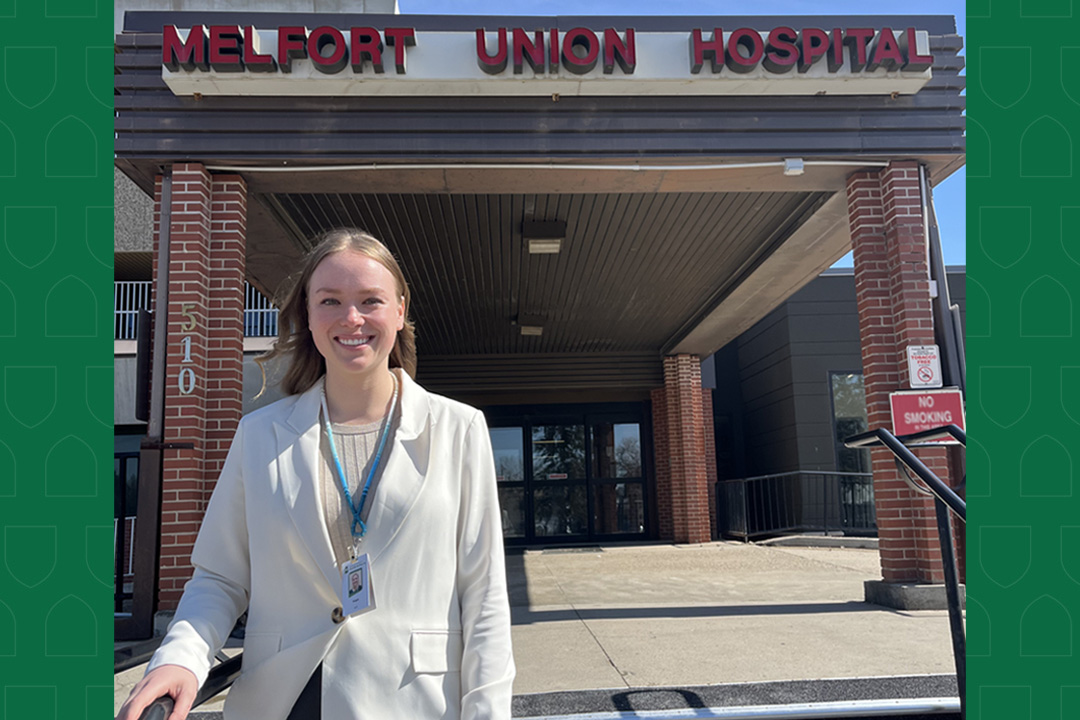
The SLIC experience in Melfort
My name is Hope Packet and I am completing my third year in Melfort in the Saskatchewan Longitudinal Integrated Clerkship (SLIC).
By Hope PacketTypically in the third year, University of Saskatchewan medical students work in urban sites and rotate through six-week blocks to cover core specialties of medicine. The SLIC experience differs in that students work in rural communities alongside local physicians, gaining exposure to each core specialty throughout the span of a year rather than within a single rotation. I have been in Melfort for six months and would like to share about my experience and answer the frequently asked questions I’ve received from other students.
The main question that I receive is about what my schedule looks like as a SLIC student and how we complete the required objectives without rotations. Every week looks different. This week, I’m spending two days in the emergency room, two days in clinic, and I’m scheduled to assist in a caesarean section (C-section). In the mornings, I spend time on the ward rounding on patients whom I may have admitted from the emergency room or have followed in clinic. I get involved with deliveries and following the care of prenatal patients when I can. I also spend some time each week in the operating room (OR) with Melfort’s general surgeon or with a visiting specialist, such as those in plastic surgery or ear, nose, and throat (ENT). On days in the OR, I can also work with the anesthetist, assisting with the induction of anesthesia and practicing straightforward intubations.
Through all of this, we gain good exposure to family medicine, internal medicine, surgery, obstetrics, pediatrics, psychiatry, emergency medicine and anesthesia – all of the core blocks. It’s a whirlwind, but according to Anki (the digital study tool), spaced repetition is the best way to learn and SLIC allows for just that!
I also get asked if I like it (resounding yes!) and what I like about it. What I particularly enjoy is that every day I go to work with a familiar physician and nurses with whom I have built relationships with. I feel comfortable asking questions and asking to be involved in cases. Overall, I feel like a valued member of the team, which can be rare as a student.
I know myself well enough to recognize that in a larger centre with more learners, I would have been a reserved student. Additionally, I would have easily been overpowered by the louder voices when trying to advocate for my own learning. Secondly, I value the hands-on procedural experience I get in Melfort, such as frequent opportunities to suture lacerations, repair perineal tears post-vaginal delivery, perform IUD and Nexplanon insertions, be first assist with a variety of surgeries, and practice excisions. The list goes on.
I feel that I’ve grown significantly as a learner doing SLIC. A huge benefit of SLIC is that as your preceptors become more familiar with you, they can be invested in your success and will push you to reach your full potential. I now have the confidence to pursue new and intimidating opportunities next year.
